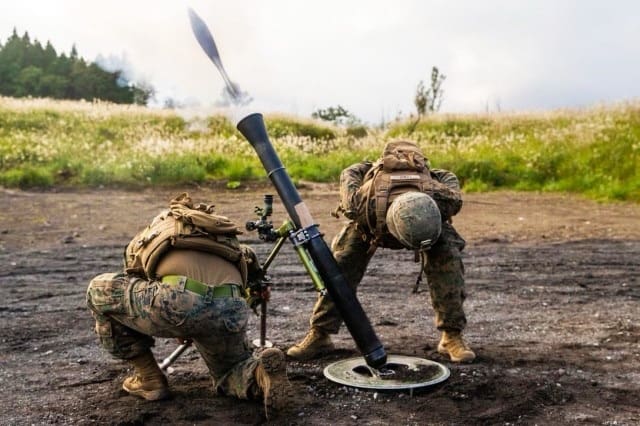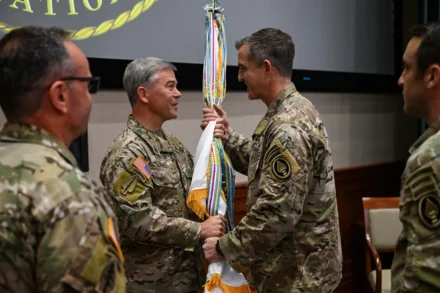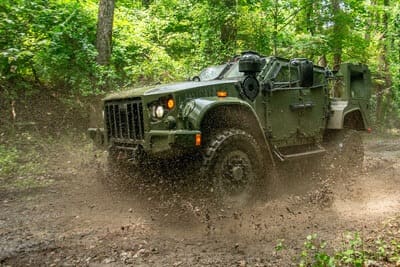PICATINNY ARSENAL, N.J. – The harm to Soldiers from frequent exposure to weapons that cause blast overpressure (BOP) when fired has gained increasing attention, prompting Congress to pass a broad set of directives related to blast exposure and brain health.
Congressional mandates to the Pentagon include setting new safety limits for troops’ blast exposure, characterizing “Tier 1” weapon systems including the suite of ammunition for BOP and brain health impact and developing material solutions if required for current and future weapon systems.
According to the Army’s Medical Command, organs most susceptible to BOP include the middle ear, lung, brain, and bowel. The command notes that many of the long-term effects are still not well understood.
The DEVCOM Armaments Center is one of the main players in the collective effort to mitigate BOP because its engineers are involved in the design, development, fielding, and sustainment of many systems that have been identified as contributing to BOP: howitzers, mortars, shoulder mounted weapons, 50 caliber weapons, along with demolitions and breaching charges.
The first “Picatinny Weapons Community Blast Overpressure Summit” was held on October 22-23, 2024. In addition to the Armaments Center, other attendees included the Joint Program Executive Office Armaments and Ammunition; Program Executive Office Soldier; the Army Research Lab, the Medical Research and Development Command, and the Defense Health Agency Public Health Aberdeen.
“That was a great opportunity for the weapons community to come together,” said Jeffrey Kraft, who is the Armaments Center POC for the BOP initiative. “It was a way to basically level-set on what’s happening across the weapons community with respect to blast overpressure and also an opportunity to communicate what we’ve been learning at the larger forums that are happening at the Office of the Secretary of Defense level.”
Kraft said it was critical to develop close relationships with all the other stakeholders involved in mitigating BOP.
“From the weapons community side, we’re not doing this in a vacuum,” he said. “We’re working closely with the medical community to make sure that as they’re learning more about blast overpressure and what that means to the Soldier, we can apply that knowledge and incorporate that into our strategies as we try to solve it from the weapons community side. Building those relationships is key to making sure that we address this as a whole-of-Army, whole-of-DOD approach.”
At the Armaments Center, lines of effort (LOE) to address the BOP issue include baselining legacy and new munition and weapon systems, engineering solutions development for reduced BOP, data acquisition and analysis and blast sensors; modeling and simulation development; and improved ‘shoot house’ designs and ranges to reduce BOP. Another LOE is munition and weapon supportability, which includes personnel training, training packages, support equipment and human factors
“The technical challenges are how do we continue to maintain the weapon systems’ lethality and performance while also reducing and mitigating blast overpressure,” Kraft said. “For each weapon system, the technical challenges are going to be a little bit different depending on the attributes of the system.”
Kraft said a big first step in BOP mitigation is to gather enough data to get a clearer picture of the size and nature of the problem. “Once we understand what the problem is, then we can start to develop solutions. And we don’t know what we don’t know. As we start to get into this, we may learn where those limits are based on physics that we can only go so far. But right now, the goal is let’s try to get moving on this sooner than later to see where that point is.
“I think the other challenge right now is truly understanding what blast does to the Soldier’s health and developing a set of requirements that can be used for developing and implementing new engineering solutions.”
One solution that has received attention in the media is a new breaching charge form. The new charge form was developed at the Armaments Center by Mr. Greg Stunzenas and team, and can be used with legacy explosives to reduce/mitigate blast overpressure, such as when Soldiers breach doors or other barriers.
Also, an attenuating blast cone developed at the Armaments Center by Dr. Robert Carson and team can be used with a mortar system such as the 120 mm mortar. The cone redirects the blast wave so that the exposure level to the Soldiers is much lower.
Over the past years, blast overpressure from howitzers has been reduced through optimization of the muzzle brake design through numerical methods (computational fluid dynamics) and testing validation. Now, a team at the Armaments Center is also exploring the possibility of removing the muzzle brake from the howitzers and make adjustments to the recoil systems as a way to mitigate overpressure.
“There’s a big push right now within the blast overpressure community to understand how wearable sensors can be used to monitor what the exposure levels are to our Soldiers,” Kraft said. “Here at the Armaments Center, we have some technologies that we’re developing and adopting from large-caliber ammunition systems and applying that technology to blast sensors. The goal is to incorporate the blast sensors into the Soldier’s helmets to understand what their exposure profiles and limits will be from a blast event.”
Another initiative is to create workshops focused on individual weapons systems. Participants are digging deeper into what data is available for the systems, what new ideas might be brainstormed, and what might be done to either eliminate or mitigate blast overpressure.
“In the workshops, we can get the weapons community members together to really target a specific weapon system and figure out, how do we get after this?”
The BOP initiative is a key example of how the Armaments Center workforce is challenged to “Find a Way” through creative solutions while also collaborating closely with our partners.
By Edward Lopez and Timothy Rider
You can skip to the end and leave a response. Pinging is currently not allowed.
Read the full article here








Leave a Reply